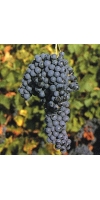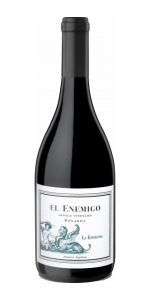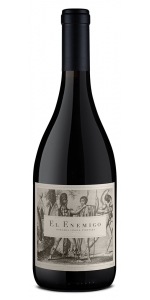Bonarda

Bonarda is a term that is used for a variety of grapes that are used to make tasteful and delectable red wines. Bonarda is a red wine from the Piedmont region of Italy. This beautiful wine includes four distinct varieties of grapes from Italy and one variety from Argentina.There are several grape varieties that can be listed by the name, but the distinct and true variety, Bonarda Piemontese, is the most rare and least cultivated variety today. The variety Bonarda Novarese, is planted in the hills of the Piedmont region and in Oltrepò Pavese. The Charbono variety used in Bonarda wine is grown in Argentina and originates in the region of Savoie. This fantastic variety is known as the “Sweet Black” grape in Italy. The last variety, Croatina, is also known by the term, Bonarda dell'Oltrepò Pavese. Bonarda is an ancient wine that has a dark red color that resembles rubies, and also includes dazzling shades of purple. Most Bonarda grapes are now planted in Argentina instead of Italy and they pair beautifully with meats. Bonarda wine is typically dry, has medium tannins, nice earthy tones, and deep flavors of cherry and plum.This wine is the perfect companion with a quesadilla or veal chop.
Cellar for up to 8 years. No need to decant before serving.
El Enemigo was founded by historian Adrianna Catena, who is also Nicolas Catena’s youngest daughter, and Catena Zapata’s chief winemaker Alejandro Vigil in 2009. These two legendary figures on the Argentine wine scene came together over a mutual love for literature and philosophy, and decided to create their own wine label that would offer a unique taste of Argentina’s exceptional terroir and its Old World winemaking heritage.
Today the brand is responsible for many of the most exciting wines coming out of Argentina, including this sensational single vineyard Bonarda. Bonarda is little-known in Europe these days, but it has a special place in Argentina where it’s considered the nation’s second red wine after Malbec. La Esperanza is a very special 150 year old vineyard that was about to be uprooted when it was discovered by Alejandro Vigil. Luckily he was able to save 5 hectares from which he makes a few hundred bottles of this wine each vintage.
Once in the winery this precious fruit is vinified with wild yeasts and the young wine ages in large foudres that are over 100 years old. The result is a remarkably elegant and vibrant red that’s bursting with luscious red cherries, plums and blackberries as well as hints of dark chocolate. A charming wine to serve with tomato-based dishes thanks to the refreshing acidity, smooth tannins, and bright fruit flavours.
Review:
Blackberry, red-plum and graphite on the nose, as well as herbal and smoky notes. It’s medium-to full-bodied with firm tannins. Fleshy texture on the palate with structure and a ink-like feel. Savory finish. Hints of chocolate at the end. Try after 2023.
-James Suckling 94 Points
Varietal-100% Bonarda
Vineyard- El Mirador Vineyard in Rivadavia, 2,132 ft. Elevation. Soil composed of mostly sand.
Ageing & Vinification- Wild Yeasts with 25 days maceration , 12 Months ageing in 100-year-old foudre.
Tech Data- 13.5% ABV, Acidity 6.1, pH-3.7
Review:
Sour cherries, blueberries and spice box on the nose. Medium-to full-bodied with firm tannins. Savory and fleshy on the palate with some structure, leading to a flavorful and fruity finish. One of the best bonardas out there. Try after 2023.
-James Suckling 94 Points
- back
Selected Options
Grape Types
Categories
Pricing
Countries
Regions
Grape Types
Wineries
Organic/Free Shipping
Dark crimson in color, with deep garnet hues. A concentrated array of aromas of mulberry, blackberry and dark plum indicate the richness to come, while savory and complex notes of charcuterie, cedar, sage and five spice tease the senses. Plush and velvety on the palate, the wine has intense fruit concentration with plum, red currant, blackberry and anise flavors, yet an enchantingly elegant and refined structure. Layers of silky tannins reveal the impressive depth of the wine before giving way to an incredibly long finish.
Review:
A rather refined Hill of Grace with roasted meat, smoked meat, and juicy plums. Some mushroom and forest-flower character, too. It’s medium- to full-bodied, juicy and savory. Light white pepper at the end. Underlying finesse and elegance to this. The flavor does not go away. From biodynamically grown grapes. Drink or hold.
-James Suckling 99 Points
Siegel Naranjo Orange Wine Viognier is made from 100% Viognier.
This wine has a nice gold color with some pink hues. On the nose, it shows some sweet notes of spices, dry nuts, white flowers, as well as some light notes of huesillo (dry peaches). In the mouth it shows a beautiful acidity, with a nice mouthfeel and structure and a good length to the finish.
Pair with rich fish and meat dishes, cheeses, appetizer and dessert.






